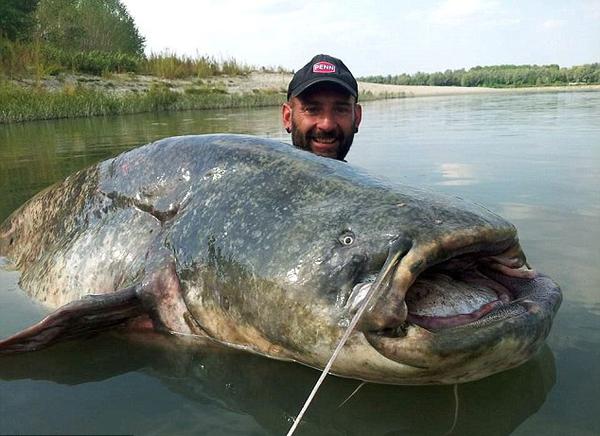Night fishing for Catfish is an exhilarating experience that combines the tranquility of dark waters with the adrenaline rush of battling a strong, whiskered predator. Among the various baits available, chicken liver stands out as a budget-friendly and highly effective option, especially when targeting catfish that rely heavily on their keen sense of smell. Below, we’ll dive into practical techniques for using chicken liver to land catfish after dark, covering everything from bait preparation to gear selection, while emphasizing ethical practices and the importance of quality tools from reliable fishing hook manufacturers.
Why Chicken Liver Works for Catfish
Catfish are scavengers by nature, equipped with highly sensitive barbels and olfactory receptors that allow them to detect food in low-visibility environments. Chicken liver’s strong, blood-based scent creates an irresistible trail in the water, drawing catfish from a distance. While its soft texture can make it tricky to keep on the hook, its affordability and accessibility make it a favorite among anglers targeting channel cats, blue cats, and even flatheads.

Preparing Chicken Liver for Night Fishing
Freshness Matters
Always start with fresh chicken livers. Avoid frozen options, as they tend to become mushy and fall apart when thawed. Store livers in a cooler with ice to maintain firmness during your fishing trip.
Cutting and Handling
Use a sharp knife to slice livers into 1–2 inch chunks. Smaller pieces are easier for catfish to swallow, while larger chunks can attract bigger fish. Handle the liver gently to avoid tearing its delicate membrane, which helps keep it intact on the hook.
Enhancing Durability and Scent
To prevent the liver from disintegrating too quickly, consider these tips:
Briefly air-dry the chunks in the sun to toughen the surface.
Soak livers in garlic oil, anise extract, or red food coloring to amplify their scent and visibility.
Coat pieces in salt or use bait mesh to create a more secure bundle.
Choosing the Right Gear
hooks Designed for Soft Baits
Chicken liver’s fragile texture requires hooks that minimize slippage. Opt for small circle hooks or octopus-style hooks (sizes #2 to #4) with a wide gap to secure the bait. Many fishing hook manufacturers produce specialized models with barbs or extended shanks tailored for soft baits like liver, ensuring better retention during casts and strikes.
Reinforcing the Bait
To keep liver on the hook longer:
Wrap the bait with elastic thread or dental floss.
Use a bait holder hook with multiple barbs along the shank.
Thread the liver onto a treble hook for added grip.
Rods, Reels, and Line
A medium-heavy spinning or baitcasting rod (7–8 feet) provides the backbone needed to handle large catfish. Pair it with a reel spooled with 15–30 lb braided line, which offers strength and sensitivity. A fluorocarbon leader (20–30 lb) can reduce visibility in clear-water scenarios.

Locating Catfish After Dark
Structure and Cover
Catfish congregate near submerged structures like fallen trees, rock piles, or deep holes where they can ambush prey. Focus on areas with slow-moving currents, such as river bends, eddies, or the edges of drop-offs.
Temperature and Oxygen Levels
In warmer months, catfish often move into shallow flats at night to feed. During cooler seasons, target deeper channels or holes where water temperatures are more stable. Use a fish finder to locate thermoclines or sudden depth changes.
Light and Baitfish Activity
Docks with underwater lights, moonlit shorelines, or areas near baitfish schools are prime spots. Catfish follow their prey, so positioning your bait near these zones increases your chances of a strike.
Effective Rigging Techniques
Carolina Rig for Bottom Fishing
This setup keeps chicken liver near the bottom, where catfish forage:
Slide a 1–2 oz egg sinker onto the main line, followed by a bead and swivel.
Attach a 12–24 inch fluorocarbon leader tied to a circle hook.
The sinker allows the bait to move naturally while preventing it from drifting too far.
Slip Bobber Rig for Suspended Bait
In still waters or when targeting suspended catfish:
Use a slip bobber adjusted to suspend the liver 1–3 feet above the bottom.
This method keeps the bait visible and prevents it from sinking into debris.
Drifting in Rivers
Allow your rig to drift with the current, covering a wider area. Periodically reel in slack to maintain sensitivity to subtle bites.
Ethical Fishing Practices
Handling Catfish Safely
– Wet your hands or use gloves to protect the fish’s slime coat, which guards against infections.
– Avoid prolonged air exposure—keep the fish in the water as much as possible during hook removal.
Hook Removal Tips
If a catfish swallows the hook, cut the line close to its mouth instead of risking injury by digging for the hook. Research shows that hooks left in place often dissolve or rust over time without harming the fish.
Reviving Exhausted Fish
Hold the catfish upright in the water, gently moving it back and forth until it swims away strongly. Never toss the fish back, as this can cause internal damage.

Alternative Baits to Consider
While chicken liver is highly effective, experimenting with other options can yield results in stubborn conditions:
Turkey Liver: Holds better on hooks due to its firmer texture.
Cut Bait: Fresh shad, skipjack, or carp chunks release oils that attract catfish.
Dough Baits: Homemade mixes with blood, cheese, or garlic can be molded around hooks for durability.
Final Tips for Success
Stay Patient: Catfish may take time to locate your bait. Allow at least 15–20 minutes before recasting.
Use Scent Attractants: Apply commercial catfish scents or natural oils to your line or leader.
Stay Stealthy: Avoid loud noises or bright lights that could spook fish in shallow areas.
Mastering night fishing with chicken liver requires a blend of preparation, adaptability, and respect for the fish. By selecting the right gear—including hooks from reputable fishing hook manufacturers designed for soft baits—and prioritizing ethical practices, you’ll not only increase your catch rate but also contribute to the conservation of catfish populations. Whether you’re casting under a full moon or a starless sky, the thrill of a catfish tugging on your line is a reward that keeps anglers coming back to the water’s edge.
For those eager to refine their skills, exploring resources on catfish behavior, seasonal patterns, and advanced rigging methods can further enhance your nighttime fishing adventures.